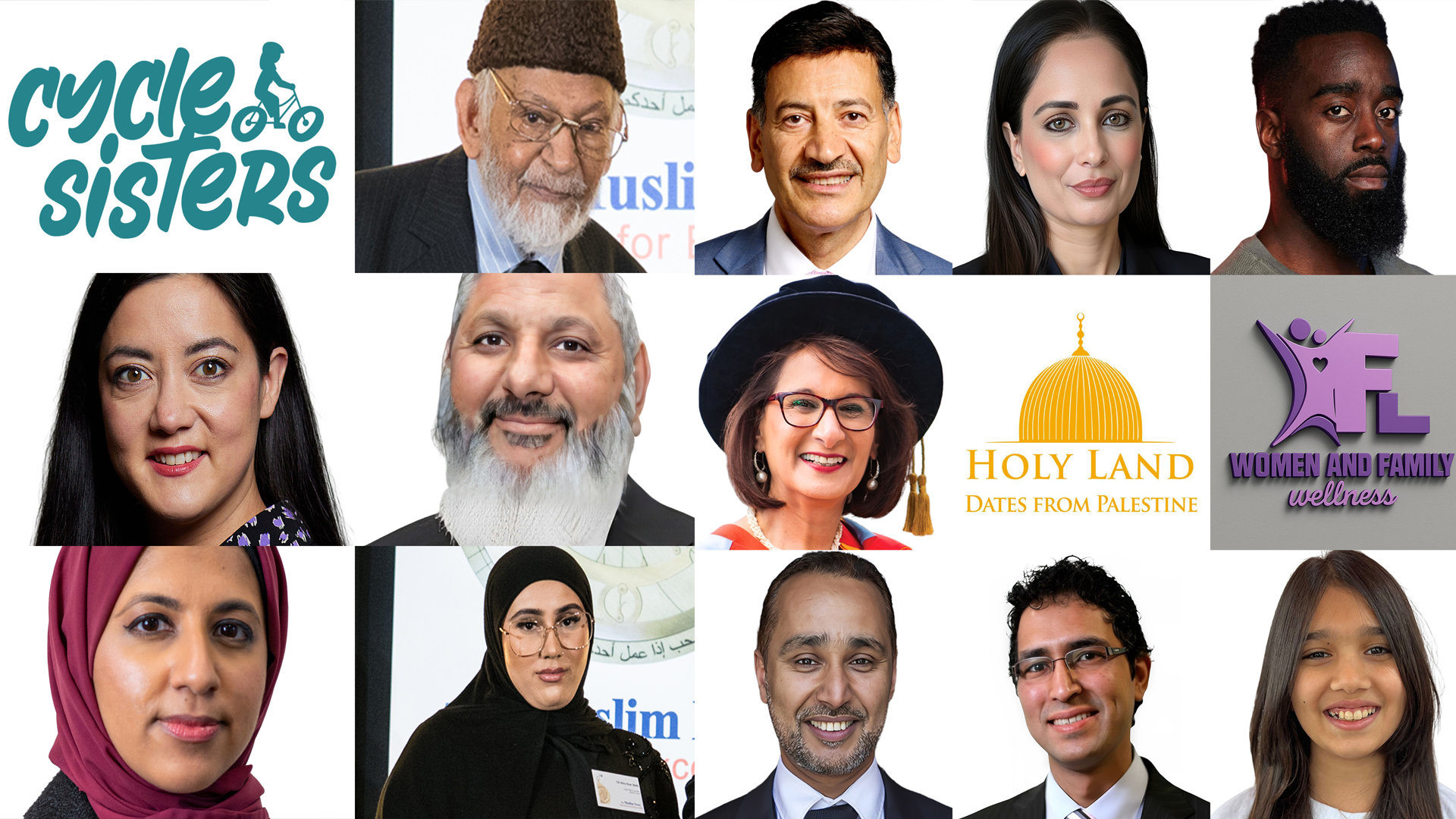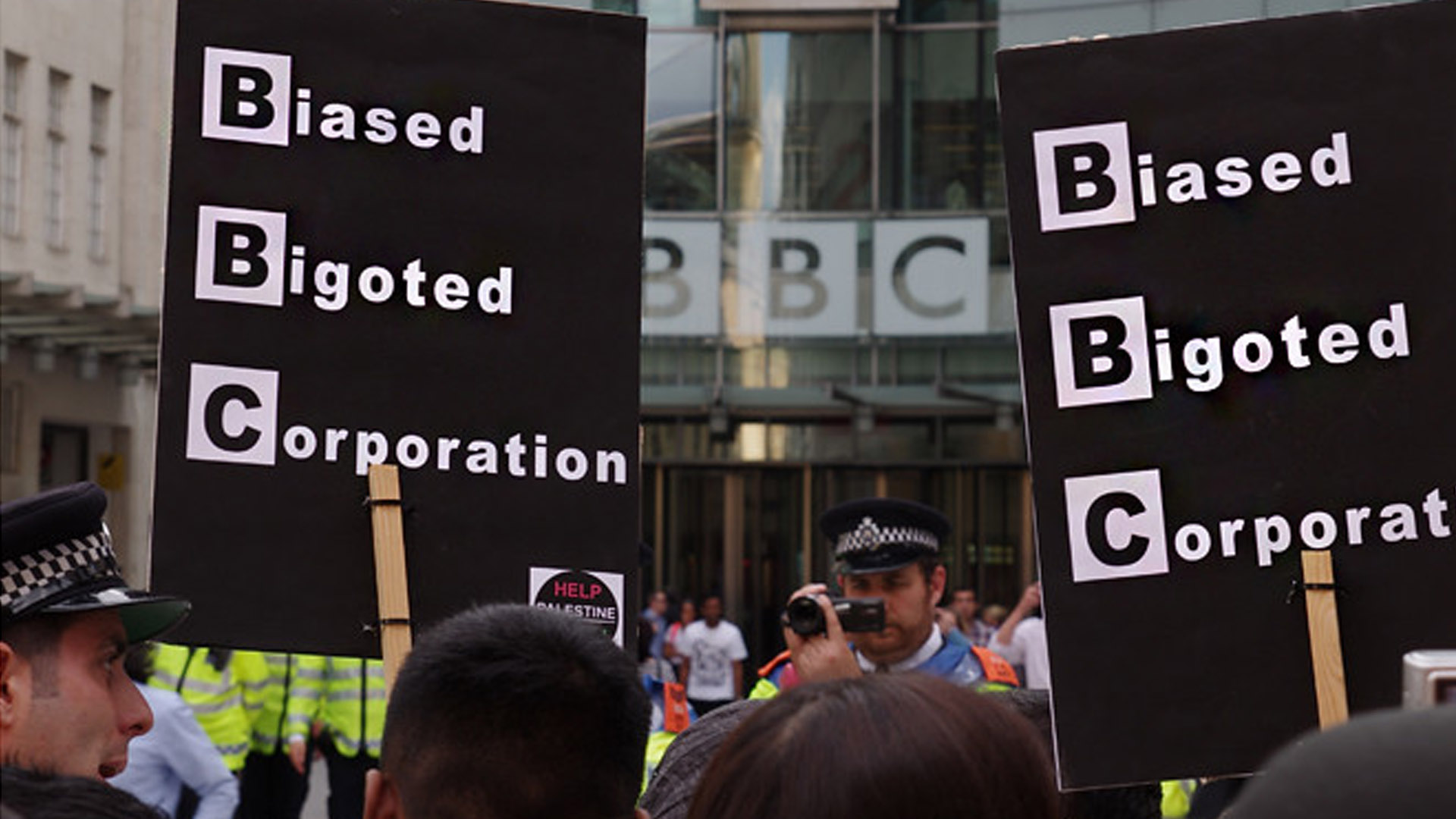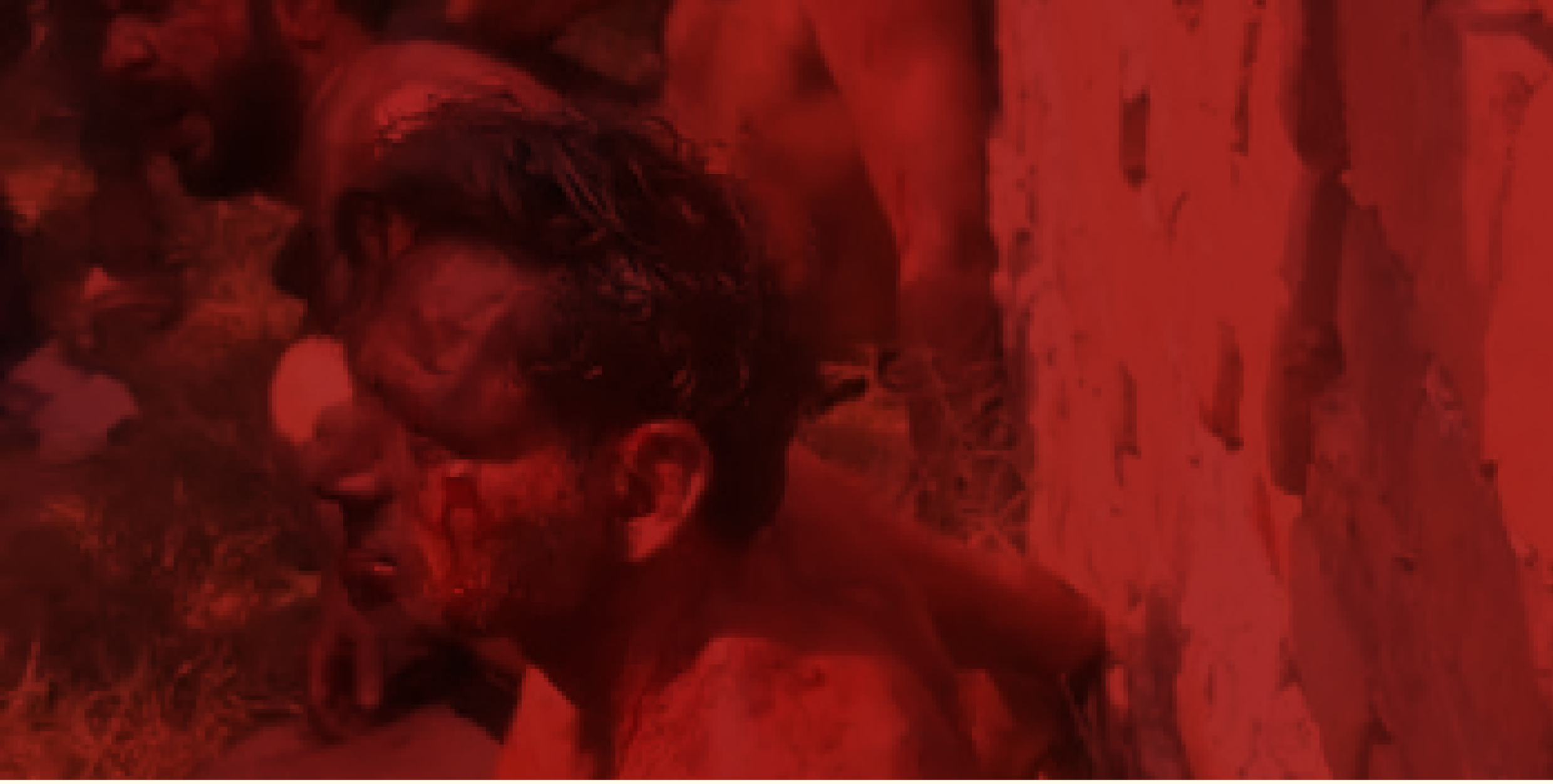
Elham Asaad Buaras
India recorded nearly 1,000 hate-related incidents in the first year of Prime Minister Narendra Modi’s third term, with Muslims and Christians bearing the brunt of targeted violence and hate speech, according to a new report by civil rights groups.
The Association for Protection of Civil Rights (APCR) and the Quill Foundation documented 947 incidents between June 7, 2024, and June 7, 2025, comprising 602 hate crimes and 345 instances of hate speech. The report, titled Hate Crime Report: Mapping first Year of Modi’s Third Government, found that 178 hate speech incidents were attributed to members of the ruling Bharatiya Janata Party (BJP), including Prime Minister Modi and several state chief ministers.
MUSLIMS & CHRISTIANS TARGETED
Muslims were victims in 419 incidents affecting 1,460 individuals, resulting in at least 25 deaths. Christians faced 85 incidents that harmed 1,504 people, making them the most affected community per incident. Of the total hate crimes, 173 involved physical violence.
“Despite the scale and intensity, there is no official mechanism to track these attacks,” the report stated, noting that whilst crimes against Dalits are monitored under Indian law, no similar framework exists for religious minorities. Churches were vandalised, prayer meetings disrupted, and pastors arrested. In March 2025 alone, 267 Christians were attacked in what the report described as a coordinated nationwide wave of violence. In Jabalpur, Madhya Pradesh, a senior priest was beaten inside a police station after seeking help for 50 Christians whose bus had been hijacked by right-wing groups.
BJP-RULED STATES LEAD VIOLENCE
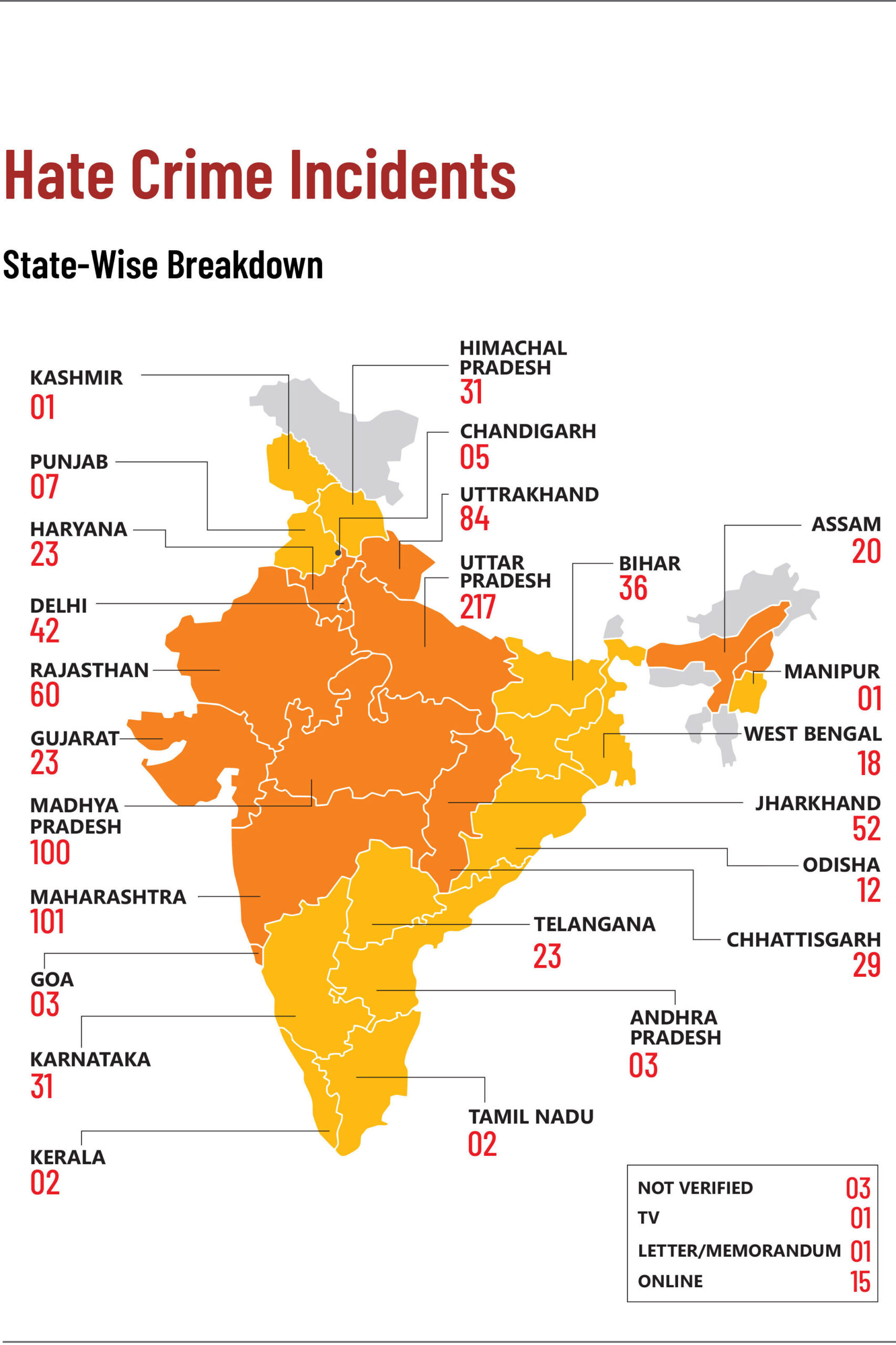
Uttar Pradesh recorded the highest number of incidents with 217, followed by Madhya Pradesh, Maharashtra, and Jharkhand—all BJP-governed states. The report found that hate crime spikes aligned with religious festivals and electoral campaigns.
In Uttarakhand, 14 of 17 hate speech incidents during local council elections were attributed to the state’s chief minister. Muslims were attacked during Hindu religious festivals, churches were vandalised during Easter, and minors were assaulted for participating in school events.
Only 13% of hate crimes resulted in formal police complaints or First Information Reports (FIRs). “This figure is indicative of the worsening atmosphere Indian Muslims are undergoing and a lag in the criminal justice system,” the report’s authors wrote.
SENIOR LEADERS INVOLVED
Of the 345 hate speech cases, 178 were linked to BJP leaders, including five instances involving Prime Minister Modi, 63 from BJP chief ministers, and 71 from other elected officials. Two sitting judges and one state governor also made inflammatory remarks. The report found that speeches by Modi and cabinet colleagues met the UN’s Rabat Threshold for inciting discrimination and hostility.
Recurring themes included warnings about “Love Jihad,” rhetoric over religious conversions, and hostility towards interfaith couples. In states that held elections—including Jharkhand and Maharashtra in November 2024—hate narratives frequently invoked “infiltration” by Bangladeshis and Rohingyas. Historical Muslim figures such as Aurangzeb were depicted as invaders, and the film Chhava was used to stir anger against Muslims in Maharashtra.
CHILDREN & ELDERLY NOT SPARED
The report documented 32 hate crimes involving minors, mostly Muslim boys, and 10 incidents targeting senior citizens, nine of whom were Muslim. In Amroha, Uttar Pradesh, a Muslim nursery student was suspended for participating in a Hindu festival celebration. In Ratlam, Madhya Pradesh, a minor was attacked for his religious identity during a school event. Christian kindergartners were harassed, and women faced threats and humiliation. In Uttar Pradesh, Vishwa Hindu Parishad members stormed a kindergarten, disrupting Christmas celebrations. In Jharkhand and Maharashtra, pastors were repeatedly arrested on fabricated “conversion” charges.
VIOLENCE SPIKES AFTER TERROR ATTACK
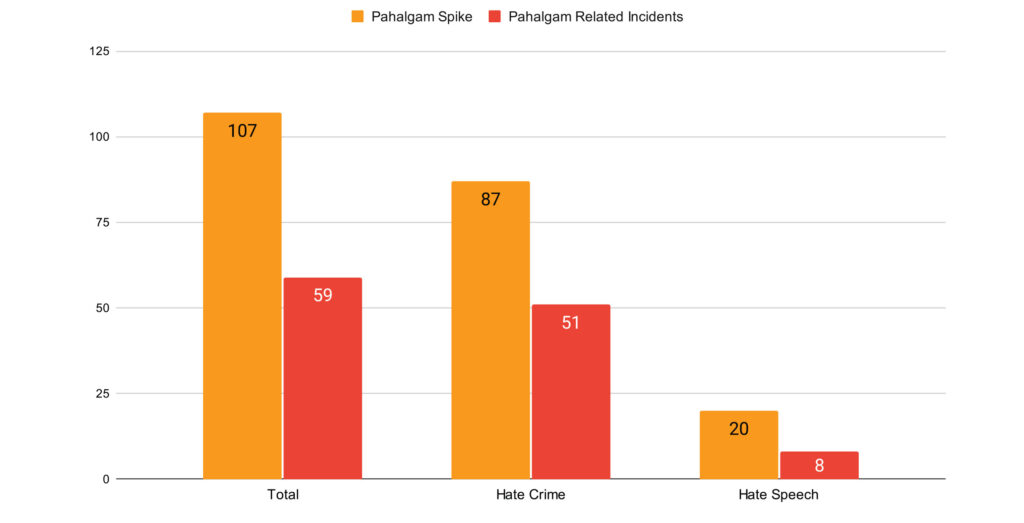
Following the Pahalgam terror attack on April 22, 2025, hate crimes against Muslims spiked nationwide. The report documented 87 hate crimes and 20 hate speech incidents in the immediate aftermath, affecting at least 136 individuals. Right-wing groups issued open threats to kill thousands of Muslims.
Of the 87 incidents, 51 were directly linked to the Pahalgam attack. The report estimated an average of seven hate crimes per day during this period. In Mussoorie, Kashmiri vendors were assaulted and forced to leave. In Rajasthan, Muslim-owned businesses were vandalised during anti-terrorism rallies.
ECONOMIC BOYCOTTS & MOB
BJP leaders led economic boycotts of Muslim-owned businesses in Maharashtra and Madhya Pradesh. Right-wing groups including Bajrang Dal, Vishwa Hindu Parishad, and Hindu Raksha Dal were repeatedly named in hate crime cases. Mob attacks were often filmed and circulated on Hindutva social media channels. The report found that 61% of hate speeches either directly led to violence or created enabling conditions. Most speeches—288 of 345—were livestreamed or televised at public rallies.
SYSTEM FAILURES
Perpetrators, frequently affiliated with right-wing groups, often acted with impunity, particularly in BJP-governed states. The report noted that many incidents likely went unreported, especially in rural areas and amongst marginalised groups. “The real numbers are likely far higher,” the authors wrote. “This low figure is not just a statistic—it reflects the deepening fear, distrust, and marginalisation Indian Muslims are living with.”
CALLS FOR REFORM
The report called for urgent reforms to identify, prevent, and penalise hate-related incidents. It warned that without such measures, India risks becoming entrenched in social divisions that may take generations to heal. “Hate crimes and hate speech never happen in isolation,” the report concluded. “They fracture families, devastate communities, and corrode the soul of a nation.”
The study represents the most comprehensive documentation of religious violence in Modi’s third term, tracking incidents across all Indian states over a full 12-month period.
